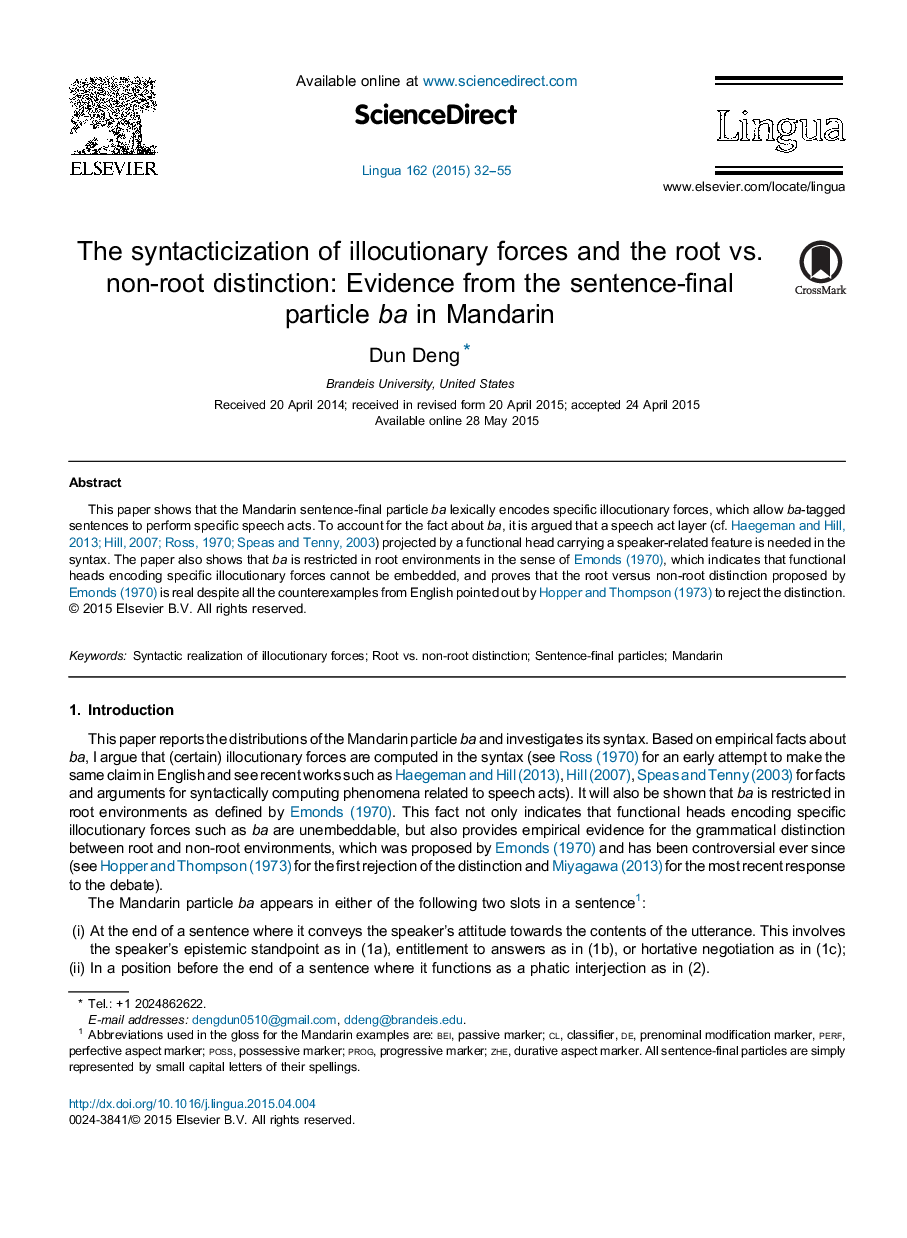| Article ID | Journal | Published Year | Pages | File Type |
|---|---|---|---|---|
| 935335 | Lingua | 2015 | 24 Pages |
•The Mandarin sentence-final particle ba encodes specific illocutionary forces.•Ba starts out in C and ends up in a functional head responsible for the speaker.•Ba is restricted in root environments in the sense of Emonds (1970).•Functional heads encoding specific illocutionary forces cannot be embedded.•Emonds’ (1970) root versus non-root distinction has grammatical relevance.
This paper shows that the Mandarin sentence-final particle ba lexically encodes specific illocutionary forces, which allow ba-tagged sentences to perform specific speech acts. To account for the fact about ba, it is argued that a speech act layer (cf. Haegeman and Hill, 2013, Hill, 2007, Ross, 1970 and Speas and Tenny, 2003) projected by a functional head carrying a speaker-related feature is needed in the syntax. The paper also shows that ba is restricted in root environments in the sense of Emonds (1970), which indicates that functional heads encoding specific illocutionary forces cannot be embedded, and proves that the root versus non-root distinction proposed by Emonds (1970) is real despite all the counterexamples from English pointed out by Hopper and Thompson (1973) to reject the distinction.
